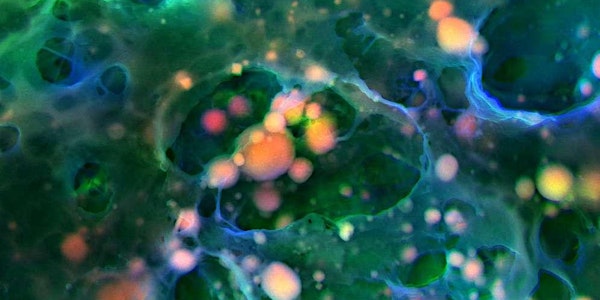
MPBE Lunchtime Seminar: Dr. Sergio Bertazzo
Date and time
Location
A.V. Hill Lecture Theatre
Medical Sciences Building Malet Place London WC1E 6BT United KingdomDescription
Mineralomics: a new research perspective
Abstract
Hard tissues and pathological calcification are formed from a combination of minerals (the inorganic component), proteins and cells (the organic component). These biominerals are placed at a unique intersection of different fields of study, including Biology, Medicine, Chemistry and Physics.
Answers to fundamental questions about the nature, origin and function of biominerals have already been offered by electron microscopy, diffraction techniques and other methods of chemical analysis. Notwithstanding the many successful contributions of physical sciences to biology and medicine, there are still a few gaps in our understanding about biominerals.
Our research involves the study of minerals in different medical (and biological) contexts and is based on the concept that physical sciences can provide answers to fundamental questions in medicine and biology. We call it Mineralomics.
In this this talk I will start by giving an overview of our research and will show how physical science characterization methods unveiled new information about cardiac diseases that shifted the current paradigm in cardiovascular calcification research. I will also show how new physical methods that we have developed can help in the study of cell behaviour by identifying characteristics in different contexts that were previously inaccessible. I will then present research we have done on fossils and show how physical science methods have revealed important information about the possibility of preservation of organic material over geological time scales. Finally, I will present our more current research on unusual calcified tissues, with new exciting results suggesting that vertebrates have several distinct natural hard tissues, beyond bone and teeth.
Biography
I joined the Department of Medical Physics & Biomedical Engineering after a Junior Research Fellowship at Imperial College London, a postdoctoral stay in Germany and another in Brazil.
I have been working with different electron microscopes for long time now and developed several new methods to prepare and image cells and, more particularly, calcified tissues. My research has so far been able to physicochemically describe how hydroxyapatite (i.e. the calcium phosphate that forms bone and teeth) behaves in biological fluids; determine the nature of the mineral present in cardiovascular calcification (e.g. in atherosclerosis, aortic valve stenosis and rheumatic fever); correlate different kinds of microscopy; and, finally, identify the possibility of preservation of organic materials in fossils that were not exceptionally preserved.
My research interests are broadly related to the formation, behaviour and nature of biominerals (mainly calcium phosphates) in different biological contexts, in a field I call Mineralomics.
Organised by
As a global leader in Medical Physics and Biomedical Engineering research, we foster close collaborations with clinicians and scientists in major hospitals, which enables our researchers to be at the forefront of healthcare engineering.
UCL Medical Physics and Biomedical Engineering is one of the longest-established medical physics departments in the UK with a distinguished history, dating from 1896 when the first X-ray device began operating at the nearby Middlesex Hospital.
Research is a major departmental activity with 97% of submissions rated as world-leading or internationally excellent in the 2021 Research Excellence Framework (REF) carried out by HEFCE.
Our department is proud to hold the Athena SWAN Bronze Award.